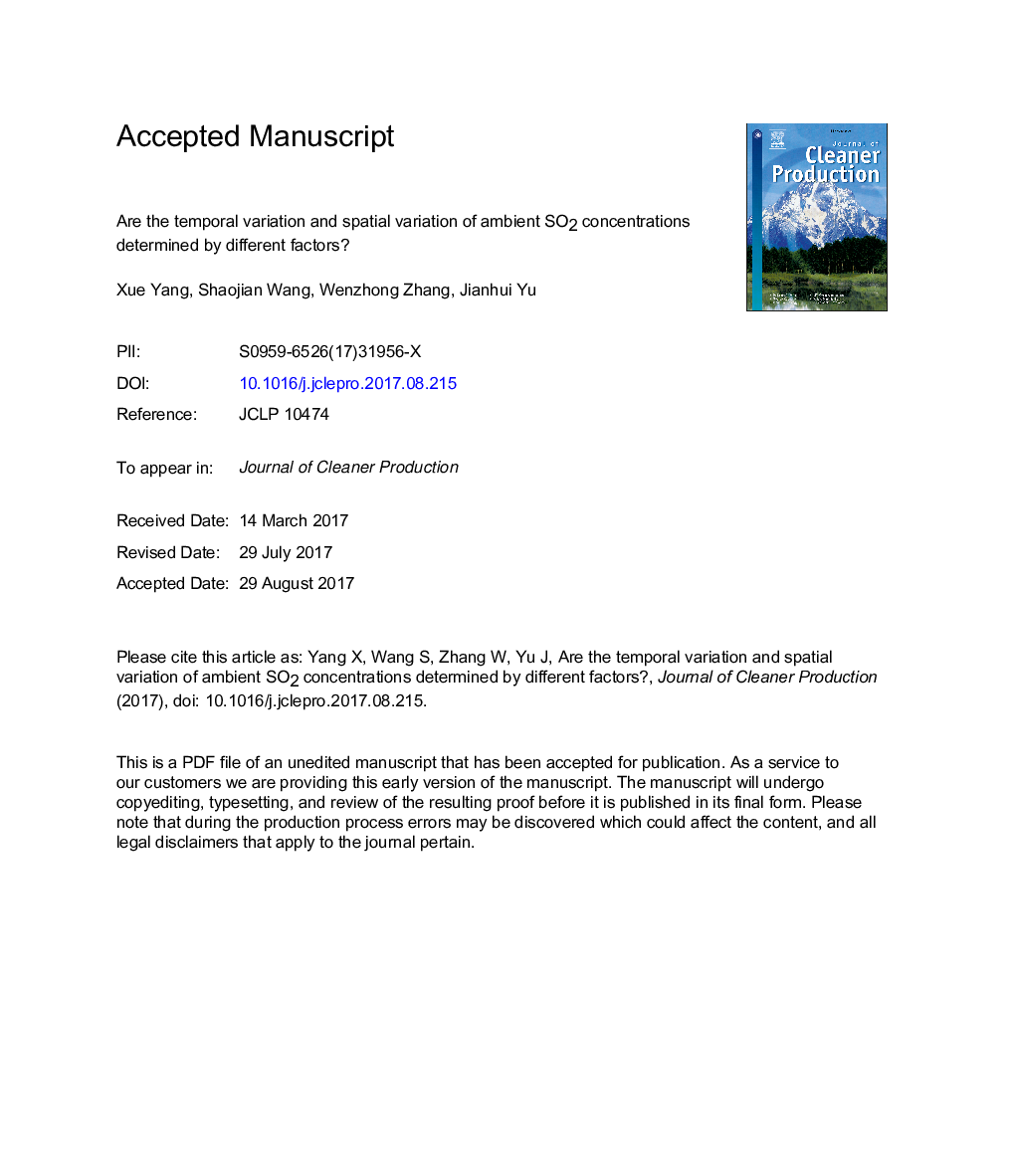| کد مقاله | کد نشریه | سال انتشار | مقاله انگلیسی | نسخه تمام متن |
|---|---|---|---|---|
| 5479494 | 1522087 | 2017 | 23 صفحه PDF | دانلود رایگان |
عنوان انگلیسی مقاله ISI
Are the temporal variation and spatial variation of ambient SO2 concentrations determined by different factors?
دانلود مقاله + سفارش ترجمه
دانلود مقاله ISI انگلیسی
رایگان برای ایرانیان
موضوعات مرتبط
مهندسی و علوم پایه
مهندسی انرژی
انرژی های تجدید پذیر، توسعه پایدار و محیط زیست
پیش نمایش صفحه اول مقاله

چکیده انگلیسی
Although previous studies have used panel data to identify factors influencing atmospheric contaminations, they generally trend to ignore the distinction between temporal variation factors and spatial variation factors of the pollution. In this study, a systematic investigation on the difference of the determinants driving the two types of variations of air pollution is addressed. We employed panel data models with both constant and varying coefficients to examine the impacts of socioeconomic factors (namely, population density, per capita GDP, and secondary industry share) and meteorological indicators (temperature, precipitation, and wind speed) on the spatial and temporal variation of ambient SO2 concentrations in China, using a sample of 30 major cities during the period 1995-2016. The results show that average SO2 concentrations for the 30 cities persistently declined over the 22 years studied, decreasing from 92 μg/m3 to 23 μg/m3, and that the most polluted cities shifted from being in the southwest to being in North China during this period. In addition, the gaseous pollutant concentrations and six factors were cointegrated. The results of the constant coefficient model (R2 = 0.734) indicate that secondary industry proportion presented a significant (p<1%) positive correlation with contamination; as such, a 1% increase in the secondary industry ratio was found to be able to cause a 0.81% increase in SO2 levels. The varying coefficient models (R2 = 0.922 and 0.839, respectively) illustrated that the temporal (yearly) variation of SO2 concentration was more influenced by human-related factors, especially by secondary industry share; as SO2 is mainly produced and discharged in the process of industrial production. While the spatial variation of such concentration was more affected by meteorological indicators, especially by wind speed. This may be caused by the large difference in climate conditions among the studied 30 cities.
ناشر
Database: Elsevier - ScienceDirect (ساینس دایرکت)
Journal: Journal of Cleaner Production - Volume 167, 20 November 2017, Pages 824-836
Journal: Journal of Cleaner Production - Volume 167, 20 November 2017, Pages 824-836
نویسندگان
Xue Yang, Shaojian Wang, Wenzhong Zhang, Jianhui Yu,